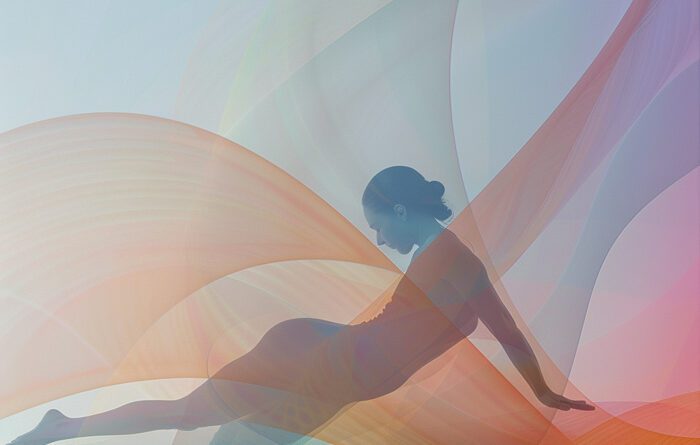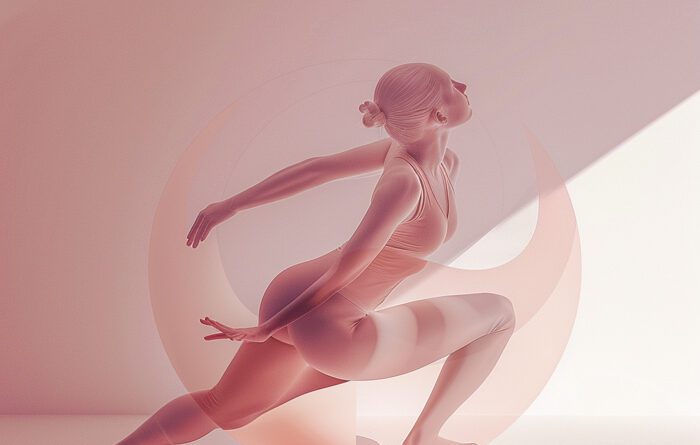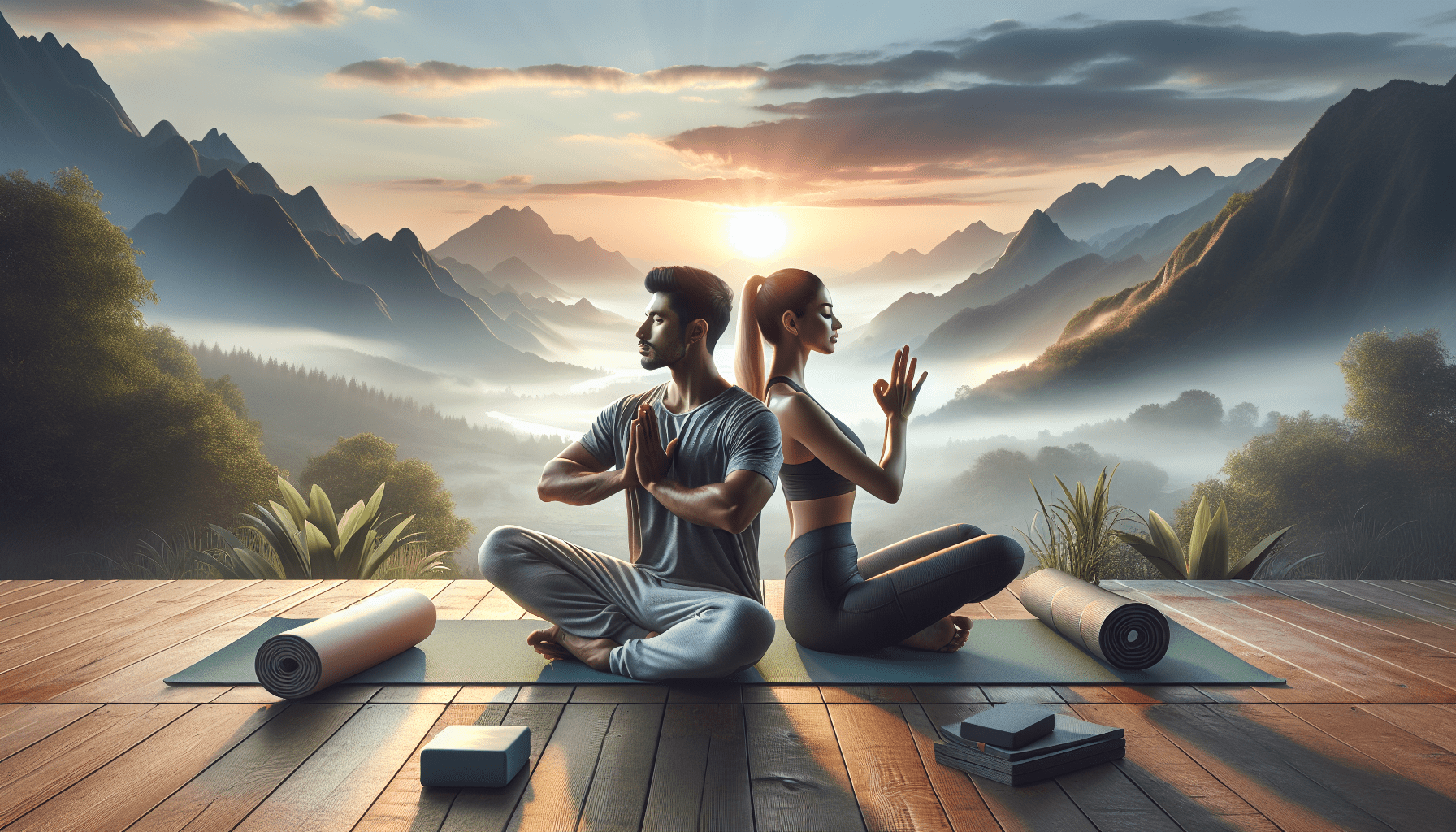Whether you’re a complete novice or someone looking to expand their yoga knowledge, navigating the world of different yoga styles can seem both exciting and daunting. In this beginner’s guide, you will gain a comprehensive understanding of various yoga styles, all tailored towards beginners like you. As your dedicated yoga instructor, I’ll take you on a journey to unlock the secrets of different yoga styles and help you unveil the perfect practice that suits you. With this guide in hand, you’ll be able to confidently step into the heart of yoga and embark on a transformative journey of both mind and body.
Introduction
Welcome to “Understanding Different Yoga Styles: A Beginner’s Guide.” In this comprehensive article, we will explore the world of yoga, the benefits it offers, and help you choose the right yoga style for you. Whether you are a complete beginner or a seasoned yogi looking to try out new styles, this guide will provide you with all the information you need to navigate the vast world of yoga with ease.
What is Yoga?
At its core, yoga is a holistic practice that combines physical movement, breath control, and meditation. Originating in ancient India, yoga has evolved over thousands of years and is now practiced by millions of people worldwide. While yoga is often associated with flexibility and physical fitness, it goes beyond just the physical aspect. It aims to bring harmony to the mind, body, and spirit, promoting overall well-being and balance.
Benefits of Practicing Yoga
The benefits of practicing yoga are vast and varied, making it a popular choice for individuals seeking more than just a physical workout. Regular yoga practice can improve flexibility, strength, and balance. It also enhances focus, reduces stress and anxiety, and promotes relaxation. Additionally, yoga can improve sleep quality, boost immunity, and support mental clarity. The practice is designed to enhance both the physical and mental aspects of your well-being, making it a holistic approach to wellness.
Choosing the Right Style for You
With so many styles of yoga available, choosing the right one for you can be a daunting task. It is important to consider your preferences, physical abilities, and goals when selecting a yoga style. Each style has its own unique focus, pace, and intensity level. To help you make an informed decision, we will explore some of the most popular styles of yoga and their key characteristics. Remember that there is no one-size-fits-all approach, and it is okay to try out different styles until you find the one that resonates with you the most.
Hatha Yoga
Origin and Philosophy
Hatha Yoga is one of the oldest and most widely practiced styles of yoga. The word “hatha” is derived from the Sanskrit words “ha” (sun) and “tha” (moon), representing the balance of opposing energies. Hatha Yoga is rooted in ancient yogic texts and focuses on uniting the mind, body, and breath. It embodies the physical aspect of yoga, emphasizing the practice of asanas (yoga postures) to promote physical strength, flexibility, and balance.
Focus on Basic Yoga Postures
Hatha Yoga places a strong emphasis on mastering the foundational yoga postures. The practice involves holding poses for varying durations to build strength and stability. It is a gentle and slow-paced style that allows practitioners to focus on proper alignment and deepening their breath.
Combines Physical Movement with Breath Control
One of the defining features of Hatha Yoga is its integration of physical movement with breath control. Practitioners are encouraged to synchronize their breath with each movement, promoting a sense of flow and mindfulness. Hatha Yoga provides a solid foundation for beginners and is a great starting point for those new to yoga.
Vinyasa Yoga
Dynamic and Flowing Style
Vinyasa Yoga is a dynamic and energetic style that seamlessly links movement with breath. The word “vinyasa” translates to “arranging something in a special way,” and in this style, it refers to the synchronization of breath and movement. Vinyasa Yoga offers a continuous flow of poses, creating a moving meditation that challenges both the body and mind.
Syncing Breath with Movement
In Vinyasa Yoga, each movement is initiated and guided by the breath. The breath acts as an anchor, helping practitioners stay present and focused throughout their practice. The synchronization of breath and movement creates a seamless flow, promoting a sense of fluidity and grace.
Variety of Sequences and Poses
Vinyasa Yoga offers endless possibilities when it comes to sequences and poses. Each class can be different, with the teacher creatively designing a sequence tailored to the needs of the students. This variety keeps the practice fresh and exciting, allowing practitioners to explore different postures and challenge themselves in new ways.

Ashtanga Yoga
Traditional and Vigorous Practice
Ashtanga Yoga is a traditional and physically demanding style that follows a fixed sequence of poses. Developed by Sri K. Pattabhi Jois, this practice is designed to purify the body and mind through a systematic and sequential approach. Ashtanga Yoga is vigorous and requires strength, stamina, and discipline.
Fixed Sequence of Poses
In Ashtanga Yoga, the primary series consists of a set sequence of poses that are practiced in the same order every time. The practice begins with sun salutations, followed by a series of standing postures, seated postures, and finishing poses. This structured approach allows practitioners to develop a strong and consistent practice.
Focus on Breath, Movement, and Gaze
Ashtanga Yoga emphasizes the trinity of breath, movement, and gaze. The breath is deep and rhythmic, fueling the body’s movements. The movement is precise and flowing, with each pose transitioning seamlessly into the next. The gaze (drishti) is fixed on specific points to help maintain concentration and create an inward focus.
Iyengar Yoga
Precise Alignment and Attention to Detail
Iyengar Yoga, named after its founder B.K.S. Iyengar, is a style that focuses on precise alignment and attention to detail. It is characterized by its use of props such as blocks, straps, and blankets to support and enhance the practice. Iyengar Yoga is known for its meticulous approach, making it suitable for individuals of all levels, including those with physical limitations or injuries.
Use of Props to Support Alignment
The use of props in Iyengar Yoga allows practitioners to achieve correct alignment in each pose. Props help create a safe and supportive environment, enabling individuals to experience the benefits of the practice without straining or overexerting themselves. With the support of props, practitioners can explore the nuances of each pose and gradually build strength and flexibility.
Focus on Holding Poses for Longer Durations
In Iyengar Yoga, poses are held for longer durations compared to other styles. This extended duration allows for a deeper exploration of each pose and offers an opportunity to develop strength, stability, and endurance. Through this focused and deliberate practice, practitioners cultivate a mindful connection between their body, breath, and mind.
Bikram Yoga
Practice in a Heated Room
Bikram Yoga, also known as “hot yoga,” is practiced in a heated room. Developed by Bikram Choudhury, this style consists of a specific sequence of 26 poses and two breathing exercises. The high temperature in the room aims to increase flexibility, promote detoxification, and enhance the cardiovascular system.
Consists of a Specific Sequence of 26 Poses
Bikram Yoga follows a fixed sequence of 26 poses, each performed twice during a class. This standardized sequence allows practitioners to track their progress and measure their growth over time. The repetition of poses helps deepen the understanding and integration of each posture.
Aim to Cleanse and Rejuvenate the Body
The heated environment in Bikram Yoga is believed to facilitate the elimination of toxins and promote a sense of cleansing and rejuvenation. The practice challenges the body’s endurance and flexibility while also providing an opportunity for introspection and mental focus. Bikram Yoga is a dynamic style that can be both physically demanding and mentally invigorating.
Kundalini Yoga
Focus on Awakening the Kundalini Energy
Kundalini Yoga is a powerful practice that focuses on awakening the dormant Kundalini energy within individuals. The term “kundalini” refers to the primal energy that lies dormant at the base of the spine. Through a combination of movement, breathing techniques, chanting, and meditation, Kundalini Yoga aims to awaken and elevate this energy, bringing forth a state of expanded consciousness.
Combines Movement, Breathing Techniques, and Meditation
Kundalini Yoga incorporates a wide range of practices to activate the Kundalini energy. Dynamic movements, called kriyas, are combined with specific breathing techniques (pranayama), hand gestures (mudras), vocalized sounds (mantras), and meditation. This multifaceted approach helps clear energetic blockages, balance the chakras, and harness the transformative power of Kundalini energy.
Aims to Balance the Mind, Body, and Spirit
The ultimate goal of Kundalini Yoga is to achieve a state of balance and harmony within the mind, body, and spirit. By awakening the Kundalini energy, practitioners can experience a heightened sense of awareness, deep relaxation, and spiritual enlightenment. Kundalini Yoga is a vibrant and transformative practice that helps individuals cultivate their inner strength and tap into their unlimited potential.
Restorative Yoga
Gentle and Relaxing Practice
Restorative Yoga provides a gentle and soothing practice that promotes deep relaxation and stress relief. It is a practice of stillness and surrender, allowing the body and mind to find rest and rejuvenation. Restorative Yoga is particularly beneficial for individuals recovering from injuries, experiencing chronic pain, or seeking a gentle form of self-care.
Use of Props to Support the Body
Restorative Yoga utilizes a variety of props such as bolsters, blankets, and blocks to support the body in poses. These props are strategically placed to provide comfort and stability, allowing the body to release tension and surrender into each posture. The use of props ensures that each pose is accessible to individuals of all levels, making it a truly inclusive practice.
Promotes Deep Relaxation and Stress Relief
The focus of Restorative Yoga is to invite the body into a state of deep relaxation and restoration. Through long-held poses and intentional breathwork, practitioners activate the body’s relaxation response, promoting a sense of calm and balance. Restorative Yoga is an oasis of tranquility in our fast-paced world, offering a sanctuary for rejuvenation and self-care.
Yin Yoga
Slow-Paced Practice with Longer-Held Poses
Yin Yoga is a slow-paced and meditative practice that targets the deep connective tissues of the body. It involves holding poses for extended periods, typically ranging from one to five minutes. The longer duration allows the muscles to relax and the connective tissues to be gently stretched and stimulated.
Targets the Deep Connective Tissues
Unlike other styles of yoga that focus on the muscles, Yin Yoga targets the fascia, ligaments, tendons, and joints. By applying gentle, sustained pressure, Yin Yoga helps to improve circulation, increase flexibility, and release deep-seated tension. This practice is especially beneficial for individuals who spend long periods sitting or have limited mobility.
Enhances Circulation and Flexibility
The long-held poses in Yin Yoga enhance circulation, encourage the flow of vital energy (Chi or Prana), and improve joint mobility. The practice works on a deep level, releasing physical and energetic blockages, and promoting the free flow of life force energy throughout the body. Yin Yoga complements more dynamic styles of yoga, offering a balance of ease and surrender.
Conclusion
Exploring different yoga styles is an exciting journey that can lead you towards finding the right fit for your personal preferences and goals. Remember, it’s not merely about achieving physical fitness but also about cultivating inner harmony and well-being. By being open to trying new styles and approaches, you can unlock the secrets of yoga and unveil the transformative power it holds. Enjoy the process of exploration and embrace the ever-changing and ever-evolving world of yoga. Let your yoga practice be a bespoke and tailored experience that is unique to you, ensuring the utmost enjoyment and fulfillment along the way.







